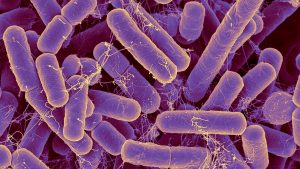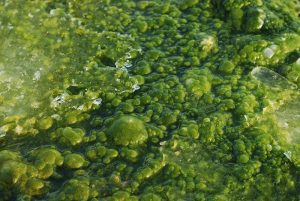Single Cell Protein
- The increasing rate of population has also increased the demand for food production in the world and has also created a gap between demand and supply chain.
- This has increased the number of hungry and chronically malnourished people.
- This situation has created a demand for some innovative and alternative proteinaceous food sources.
- Single cell protein (SCP) production has created a major change in this field. SCP is the protein extracted from pure cultivated microbial biomass.
- It can be used for protein supplementation of a staple diet by replacing the conventional meal
- Also, it is inexpensive and involves microorganisms for its production. The recent advancement of recombinant technology has led a path for the production of SCP on a commercial level.
- SCP has additional benefits as it is made by the conversion of agricultural and industrial wastes to protein-rich food.
- Microorganisms fitted for SCP production categories included four main categories: bacteria, yeasts, molds/fungi and algae.
Characteristics required in microorganisms for SCP production
– Physiological characteristic
- High growth rate
- Growth on simple media
- High yield coefficient on a carbon substrate
- High affinity for the carbon substrate
- Ability to utilize complex substrate and/or its mixture when required
- Ability to grow at high cell densities
- Resistance to the substrate and/or product toxicity
- Stable growth in continuous culture
- High optimum growth temperature
- Stable fermentation – resistance to contamination
- Capability of genetic modification
- Use ammonia as a 5nitrogen source
- pH tolerant
Other requirements
- Protein, fat and carbohydrate content of high quality
- Low nucleic acid content
- High nutrient content
- High digestibility
- Absence of toxicity
- Good taste
- Ease of recovery
- Amenable to further processing, e.g., drying, without changes of color, texture, smell, etc.
Single cell protein production (Microorganisms)
Bacteria
- Firstly, the growth rates and cellular yields for bacteria are higher compared to other organisms for carbon sources.
- Secondly, bacteria have higher protein contents than other organisms.
- Thirdly, the quality of the protein in terms of its amino acid profile ie. sulfur amino acids and lysine are higher.
- But the small size of bacteria cause difficulties in the separation stage and also the high content of nucleic acids renders their use unsuitable as human food.
- Imperial Chemical Industries developed an SCP (Pruteen) for animal feed from methanol, using the bacterium Methylophilus methylotrophus
- Example- Rhodobacter capsulatus

Yeasts
- Yeast has served as one of the most important microbial food and it has got a lot of benefits.
- Presently, three types of yeast products are majorly available: brewer’s yeast, dried yeast and dried Torula yeast.
- Brewer’s yeast (a byproduct of the beer industry), and dried yeast are of the same genus; Saccharomyces.
- The Torula yeast or Candida utilis is a different strain which is capable of assimilating all carbohydrates including pentoses, whereas S. cerevisiae does not have the ability to utilizing pentose carbohydrates.
- Yeasts have low concentration of sulfur-containing amino acids ie. methionine and cysteine but it has high amounts of essential amino acids such as lysine, tryptophan and threonine.
- Yeasts are a good source of vitamin B, vitamin E and provitamin D, but few yeast strains contain vitamin A.
- The quantities of these vitamins depend upon various factors and may vary according to strain, specific conditions of cultivation, carbon source and methods of production.
- Examples- Saccharomyces cerevisiae, Pichia pastoris, Candida utilis, Torulopsis corallina, Geotrichum candidum

Fungi
- Higher fungi, known as mushrooms, have been used as a food flavouring
- The cell walls of fungi are high in glucans enriching fibre to the diet.
- Recent research on fungal-based single-cell protein has various reports:
1) the growth rates of fungi are slower than yeasts and bacteria,
2) the protein content is also low comparative to bacteria and yeasts,
3) sulfur amino acids are deficient in fungal protein,
4) the problem of digestibility of their cell wall is a major problem
5) fungi’s entity with regard to nutrition and toxicology is quite unknown - Examples- Fusarium venenatum, Scleotium rolfsii, Poluporus, Trichoderma, Scytalidium acidophilum

Algae
- Algae acts a source of SCP due to their photosynthetic abilities and the ready availability of CO2
- Also there are few species which are able to fix atmospheric nitrogen like Cyanophyta (blue-green algae).
- Algal protein production occurs in large open pools, natural lakes or ponds, and often contamination by bacteria and protozoa is observed in the process.
- Algal growth rates are lower than bacteria and yeasts but the separation procedure is quite easier.
- Algae can also be utilized as a supplement to cereals, or fed in small quantities in conjunction with other protein sources due to their high lysine content.
- The stability of the cell wall is the primary importance in the utilization of micro-algal SCP. The mammalian digestive system can not readily digest the walls of both green and blue-green algae but ruminants generally are better utilizers
- Examples- Spirulina, Chlorella

References
- https://pubmed.ncbi.nlm.nih.gov/14538097/
- https://pubmed.ncbi.nlm.nih.gov/6380957/
- https://www.ncbi.nlm.nih.gov/pmc/articles/PMC5645522/